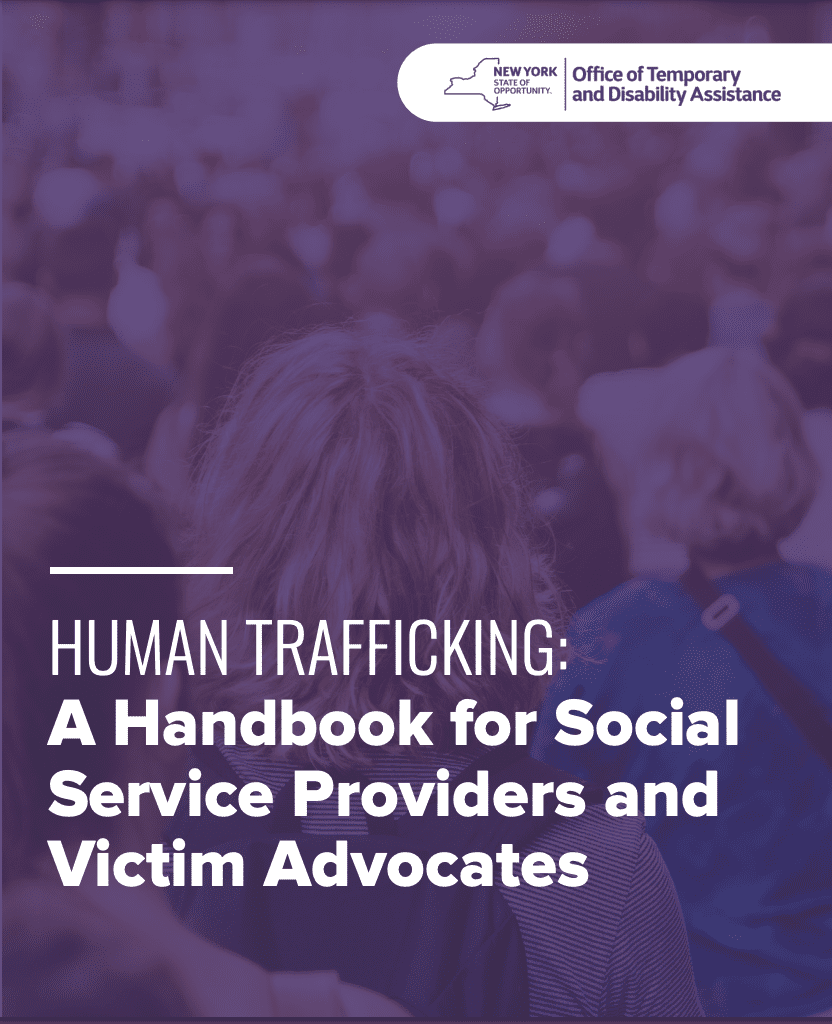
A Handbook for Social Service Providers and Victim Advocates
Contents
What is Human Trafficking…………………………………………………………………………………………..3
Making a Referral in New York…………………………………………………………………………………… 5
Federal Certification…………………………………………………………………………………………………….7
Information for Social Services Districts……………………………………………………………………..8
Response to Human Trafficking Program…………………………………………………………………..8
New York State Interagency Task Force…………………………………………………………………..10
Important Contacts …………………………………………………………………………………………………….10 Acronyms/Terminology……………………………………………………………………………………………….11
Appendix:
Attachment A: Fax Confirmation Form …………………………………………………………………….12
Attachment B: Set of Sample Referral Letters – NYC ………………………………………………13
Attachment C: Set of Sample Referral Letters – Rest of State ……………………………….. 17
Attachment D: Sample Federal Certification Letter ………………………………………………..21
Attachment E: Frequently asked Questions …………………………………………………………..22
I. What is Human Trafficking
The purpose of this handbook is to provide resources to social service professionals, law enforcement liaisons and other advocates who work directly with victims of human trafficking.
Human trafficking is a global crisis. This heinous crime manifests itself in varying forms and occurs in urban, rural, and suburban communities alike. Victims are forced, defrauded, and coerced into labor, debt bondage, prostitution, and involuntary domestic work. Human trafficking victims include women, men, and children. They may be trafficked from underdeveloped or impoverished regions worldwide, but also from vulnerable populations in New York.
Trafficking has infiltrated an astounding number of modern industries, including agriculture, construction, mining, hospitality, food service and domestic work. Victims may be exploited by private or nefarious businesses, including massage parlors, nail salons, brothels, sweatshops, escort services and erotic dancing establishments. They may also be forced or coerced into fraudulent marriage or made to peddle or beg on the streets.
While the circumstances of human trafficking vary from case to case, there is consistency with the deeply harmful effect it has on victims. Traffickers use a variety of tactics to assert and maintain physical and psychological control over their victims to create fear and dependence. This control prevents victims from leaving the situation or reporting their victimization to law enforcement. Traffickers are adept at using ways to manipulate and intimidate victims without being obvious to outsiders. These deplorable human rights abuses are far too often undetected by law enforcement and governmental officials. Assessing the full scope of human trafficking is difficult because cases so often go undetected –something the United Nations refers to as the hidden figure of crime.
At its core, human trafficking is a crime and human rights abuse involving the use of force, fraud, or coercion to exploit an individual for the purpose of forced labor or commercial sex. This resource guide provides some basic information on the problem and some useful resources for providers. Thank you for your dedication to this work. We have included a list of frequently asked questions and answers in the appendix, along with specialized contacts should you require further assistance.
To view the entire handbook, click here.
